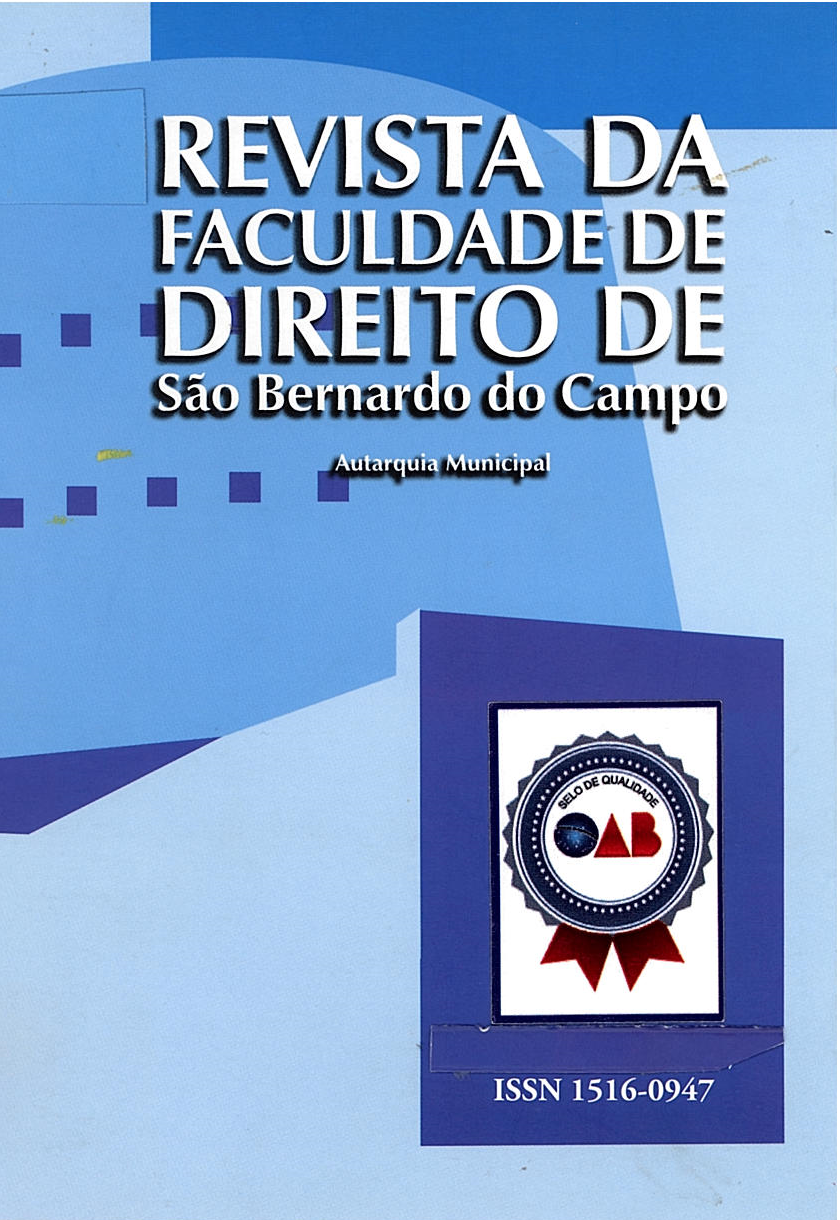BRAZILIAN MILITARY POLICE: A CULTURE OF BRUTALITY
Palavras-chave:
Brazilian Military Police, Militarisation, Police brutality, Organisational crimesResumo
The Brazilian Military Police kills an average of 6 civilians each day according to the Brazilian Public Security of 2013. Though being among the most influential and important democratic countries, with a lot of regional and global influences, Brazil is still a reference point for police abuse, torture and copious cases of unlawful practices committed by public agents whose main task is to protect and serve. The actions taken by the Military Police jeopardize the state’s legitimacy, which is the nature of its own existence in a democratic rule of law. The organisational shape of an institution is invariably associated with its objectives. To what extent, then, a military police brings to its duty and performance a warfare mentality? Will a military police force see a civilian as an enemy? Thus, bearing in mind the lethality of the Brazilian police, this study sought to identify whether the military nature of the police is conducive for the brutality and violence. The study of a specific institutional violence must not ignore the origins and the social dynamics with which this violence reproduces itself, echoing from the political discourse, the social beliefs and informative media fabricated by the mass communication corporations. Therefore, a brief debate and reflections on Brazil’s recent history, as well as psycho-social characteristics were brought to light in order to contextualise and stir up the debate.
Referências
ABRANTES, D. M. A formação da barbárie e a barbárie da formação: a lógica por trás do treinamento da PM. C. Barros, Interviewer, & B. Editorial, 2015.
AGAMBEN, G. Crise de Legitimidade. Boitempo Editorial: From <http://blogdaboitempo.com.br/2015/04/20/agamben-crise-de-legitimidade/>. Retrieved 08/08/2015.
AMADOR, F. S. Violência policial: verso e reverso do sofrimento. Amnesty International, 2002.
ARAÚJO, T. Polícia Militar de São Paulo bate todos os recordes de letalidade e mostra 'preferência' pela periferia. From <http://www.brasilpost.com.br/2015/02/26/violencia-pm-sao-paulo_n_6758944.html.Retrieved 08/24/2015.
BENJAMIN, W. Crítica da Violência: crítica do poder. São Paulo, Brazil: Cultrix,1921.BRANDT, R. PM de Campinas determina abordagem de suspeitos de "cor parda e negra". From Agência Estado: <http://www.estadao.com.br/noticias/geral,pm-de-campinas-determina-abordagem-de-suspeitos-de-cor-parda-e-negra,987908>. Retrieved 08/15/2015.
CÂMARA DOS DEPUTADOS. Câmara lança enquete sobre projeto que exige rigor para apurar violência policial. From <http://www2.camara.leg.br/camaranoticias/noticias/SEGURANCA/478469-CAMARA-LANCA-ENQUETE-SOBRE-PROJETO-QUE-EXIGE-RIGOR-PARA-APURAR-VIOLENCIA-POLICIAL.html>. Retrieved 08/13/2015.
CARVALHO, I.Antes de zerar morte por tráfico, Uruguai proibiu programas policiais.From <http://www.guerrilhagrr.com.br/post/123743566390/antes-de-zerar-morte-por-tr%C3%A1fico-uruguai-proibiu>. Retrieved 08/15/2015.
COIMBRA, C. M. Doutrinas de segurança nacional: banalizando a violência. In: Psicologia em Estudo, v. 5, n. 2, 2000.
FEDERAL BUREAU OF INVESTIGATION. Expanded Homicide Data Table 14. From Uniform Crime Reports: <https://www.fbi.gov/about-us/cjis/ucr/crime-in-the-u.s/2012/crime-in-the-u.s.-2012/offenses-known-to-law-enforcement/expanded-homicide/expanded_homicide_data_table_14_justifiable_homicide_by_weapon_law_ enforcement_2008-2012.xls>. Retrieved 07/25/2015.
FOUCAULT, M. Em defesa da sociedade. São Paulo: Martins Fontes, 2002.
FRIEDRICHS, D. O. Trusted Criminals: White Collar Crime in Contemporary Society. 4th ed. Wadsworth: Cengage Learning, 2009.
GALEANO, E. Veias abertas da América Latina. São Paulo: L&PM, 1970.
GOMES, R. Especialista afirma que maior parte dos dados de segurança pública de SP é falha. From Rede Brasil Atual: <http://www.redebrasilatual.com.br/cidadania/2014/02/especialista-afirma-que-maior-parte-dos-dados-de-seguranca-publica-em-sp-sao-falhos-4950.html>. Retrieved 08/24/2015.
GREY, C. A very short, fairly interesting and reasonably cheap book about studying organizations .London: SAGE, 2005.
INSTITUTO BRASILEIRO DE GEOGRAFIA E ESTATÍSTICA-IBGE. From São Paulo: <http://www.ibge.gov.br/estadosat/perfil.php?sigla=sp>. Retrieved 08/25/2015.
HUMAN RIGHTS WATCH. Brasil: Proteja Pessoas sob a Custdódia do Estado. From Human Rights Watch: <http://www.hrw.org/node/254670>. Retrieved 08/24/2015.
HERSHAW, E. Scars of police brutality in Brazilian protests haunt world cup kickoff. From VICE: <https://news.vice.com/article/scars-of-police-brutality-in-brazilian-protests-haunt-world-cup-kickoff>. Retrieved 20/08/2015.
LANIER, M., HENRY, S. Essential criminology. Colorado: Westview Press.2010.
LIMA, F. B. Entre a lei e o ato: considerações acerca da violência policial. In: Latusa Digital, n. 42/43,2010.
LIMA, J. M. Democracia e accountability. Violência policial e práticas de controle sobre a Polícia Militar no estado de São Paulo. Dissertação de mestrado em Ciências Sociais, 2011.
MACEDO, L. "Quem não reagiu está vivo", diz Alckmin sobre ação da ROTA. From <http://g1.globo.com/sao-paulo/noticia/2012/09/quem-nao-reagiu-esta-vivo-diz-alckmin-sobre-acao-da-rota.html>.Retrieved 08/15/2015.
MANSO, B. P. Homicídios, promessas de vingança, medo e o recorde da violência policial em SP pós whatsapp. From <http://www.vice.com/pt_br/read/homicidios-promessas-de-vinganca-medo-e-o-recorde-da-violncia-policial-em-sp-pos-whatsapp>. Retrieved 07/23/2015.
MARTINS, M. Qual é o tamanho da violência no Brasil? From <http://www.cartacapital.com.br/revista/826/numeros-sem-tortura-3725.html>. Retrieved 08/24/2015.
MISSE, M.(coord.).Autos de resistência. Uma análise dos homicídios cometidos por policiais na cidade do Rio de Janeiro (2001-2011). From: <http://www.pm.es.gov.br/download/policiainterativa/PesquisaAutoResistencia.pdf>. Retrieved 08/24/2015.
MESQUITA NETO, P. Violência policial no Brasil: abordagens teóricas e práticas de controle. In: D. C. Pandolfi, et al (orgs), Cidadania, justiça e violência. Rio de Janeiro, Fundação Getúlio Vargas, 1999.
MONCLAIRE, S. Carta Maior. from <http://cartamaior.com.br/?/Editoria/Politica/Stephane-Monclaire-expressao-Constituicao-cidada-e-enganadora/4/30167>. Retrieved 04/18/2015.
OLIVEIRA, A. L. Pressupostos para uma análise crítica do sistema punitivo .From <https://jus.com.br/artigos/7612/pressupostos-para-uma-analise-critica-do-sistema-punitivo>. Retrieved 07/23/2015
PUFF, J. (2014, 02 20). Promotoria aposta em provas contundentes contra PM no caso Amarildo. From <http://www.bbc.com/portuguese/noticias/2014/02/140220_amarildo_julgamento_jp_c>. Retrieved 08/20/2015.
PAES-MACHADO, E.NORONHA, C. V. Policing the Brazilian Poor: Resistance to and acceptance of police brutality in urban popular classes. In: International Criminal Justice Review, n. 64, 2002.
POTTER, G.Cost, Deterrence, Incapacitation, Brutalization and the Death Penalty The Scientific Evidence. From: <http://www.e-archives.ky.gov/pubs/Public_Adv/jan00/dppotter.html>. Retrieved 08/20/2015.
SAFATLE, V. (2015). A lógica do Condomínio.<http://www.cpflcultura.com.br/2015/06/03/33743/>.Retrieved 08/20/2015.
______. (2013). Colunas -Folha de São Paulo. From: <http://www1.folha.uol.com.br/colunas/vladimirsafatle/2013/10/1360075-violencia-e-silencio.shtml>. Retrieved 08/10/2015
______. O que resta da Ditadura. Vol. 1. São Paulo: Boitempo, 2010.
SMEULERS, A. GRÜNFELD, F. International Crimes and Other GrosHuman Rights Violations. From: <http://www.brill.com/international-crimes-and-other-gross-human-rights-violations>. Retrieved 08/10/2015.
SOUZA, R. B.; OLIVEIRA, A. L. Subcultura no uso da força policial: uma análise do uso da força policial a partir da teoria das representações sociais. Pesquisas e Práticas Psicossociais. From: <http://www.ufsj.edu.br/portal-repositorio/File/revistalapip/volume4_n1/sousa_e_oliveira.pdf>. Retrieved 08/10/2015.
SOARES, L. E. Por que tem sido tão difícil mudar as polícias? In B. K. et al. Bala Perdida: A violência policial no Brasil e os desafios para sua superação. V. 1. São Paulo: Boitempo 2010.
RIO ON WATCH. UN Countries Reccomend Abolition of Brazil's Military Police.From:<http://www.rioonwatch.org/?p=7993>. Retrieved 07/24/2015.
ROBERTO, E.; VITURI, G. Relato de um PM. From: <http://www.vice.com/pt_br/read/relato-de-um-pm>. Retrieved 08/24/2015.
TELES, J. A abertura dos arquivos da ditadura militar e a luta dos familiares de mortos e desaparecidos políticos no Brasil. From: <http://diversitas.fflch.usp.br/files/a%20abertura%20dos%20arquivos%20da%20ditadura.pdf>. Retrieved 08/24/2015.
UNICEF. Direitos negados: a violência contra a criança e o adolescente no Brasil. From: <https://www.unicef.org/brazil/pt/resources_10525.html>. Retrieved 08/24/2015.
ZAVERUCHA, J. Relações civil-militares: o legado autoritário da Constituição de 1988. In: SAFATLE, V;TELES, E. O que resta da ditadura. São Paulo: Boitempo, 2010.
WELLS, M. Why do Brazilian Police Kill? From: <http://www.insightcrime.org/news-analysis/why-do-brazilian-police-kill>. Retrieved 08/24/2015.
WILLYS, J. Formas de temer, formas de reprimir: as relações entre a violência policial e as suas representações nas mídias. In: KUCINSKI, B. Bala perdida: a violência policial no Brasil e os desafios para sua superação. São Paulo: Brasil: Boitempo, 2010.
Downloads
Publicado
Como Citar
Edição
Seção
Licença
TERMO DE CESSÃO DE DIREITOS AUTORAIS
Pelo presente instrumento jurídico particular, na condição legal de autor(a) e detentor(a) dos direitos autorais sobre a obra ora apresentada para avaliação, transfiro integralmente, pelo presente Termo de Cessão de Direitos Autorais, à Faculdade de Direito de São Bernardo do Campo – Autarquia Municipal, sediada na Rua Java, 425, Jardim do Mar, São Bernardo do Campo, SP, CEP 09050-450, inscrita no Cadastro Nacional de Pessoa Jurídica sob o número 59.108.100/0001-89, os direitos de edição, publicação, ditribuição, reprodução em qualquer formato (impresso, digital ou qualquer outra plataforma) e forma de comercialização, bem como todos os elementos que possam conter, patrimoniais ou não, referentes à esta obra, com fundamento nos artigos 28 a 33 da Lei Federal nº 9.610, de 19 de fevereiro de 1998 (Lei de Direitos Autorais), para a finalidade específica de publicação na Revista da Faculdade de Direito de São Bernardo do Campo e Repositório Eletrônico, podendo ser o artigo livremente consultado e reproduzido.
Fico ciente, ainda, que tal transferência se dá por prazo de forma definitiva e irretratável.
Estou ciente de que o envio da obra implica na concordância total com o acima exposto.





